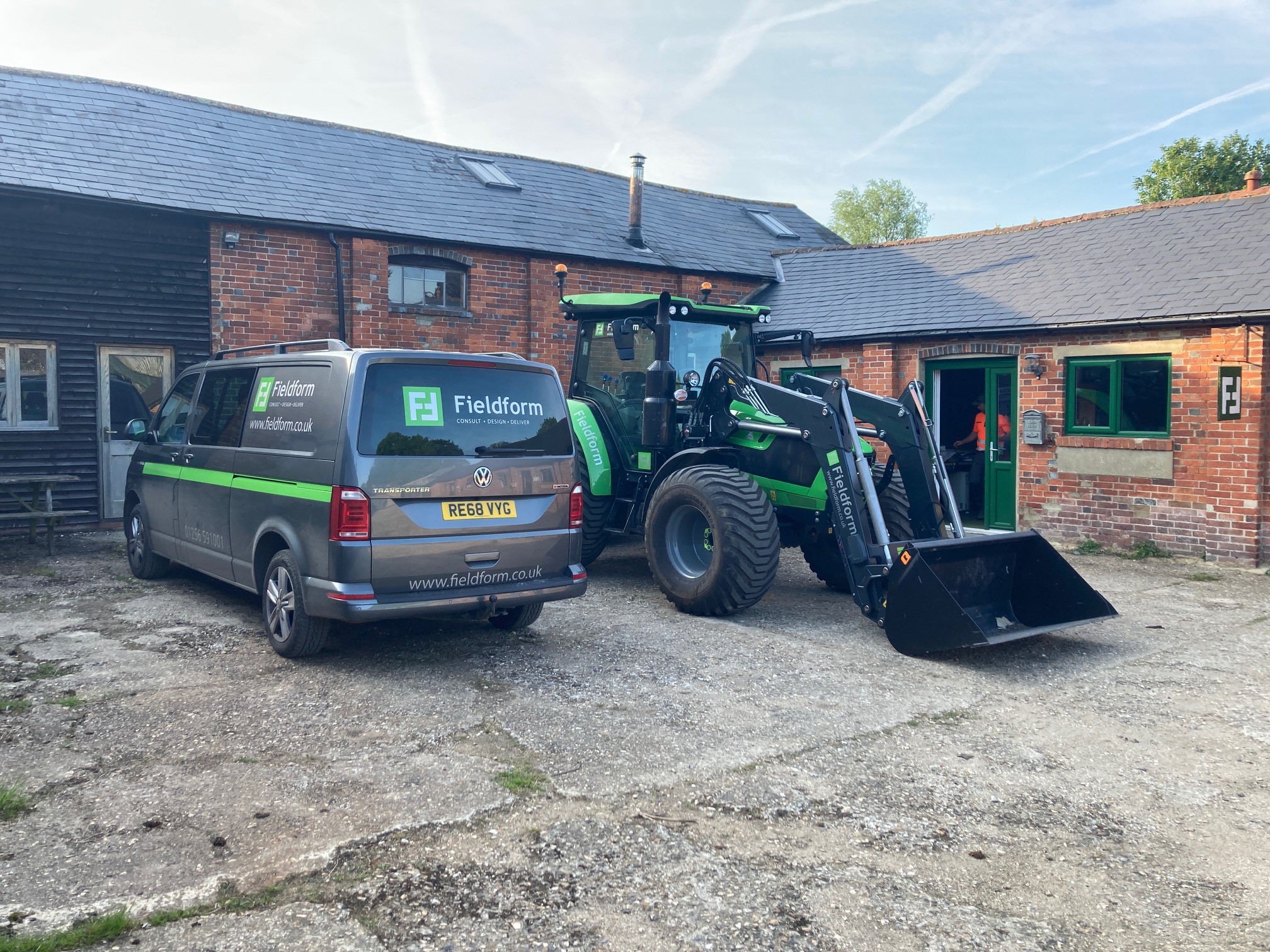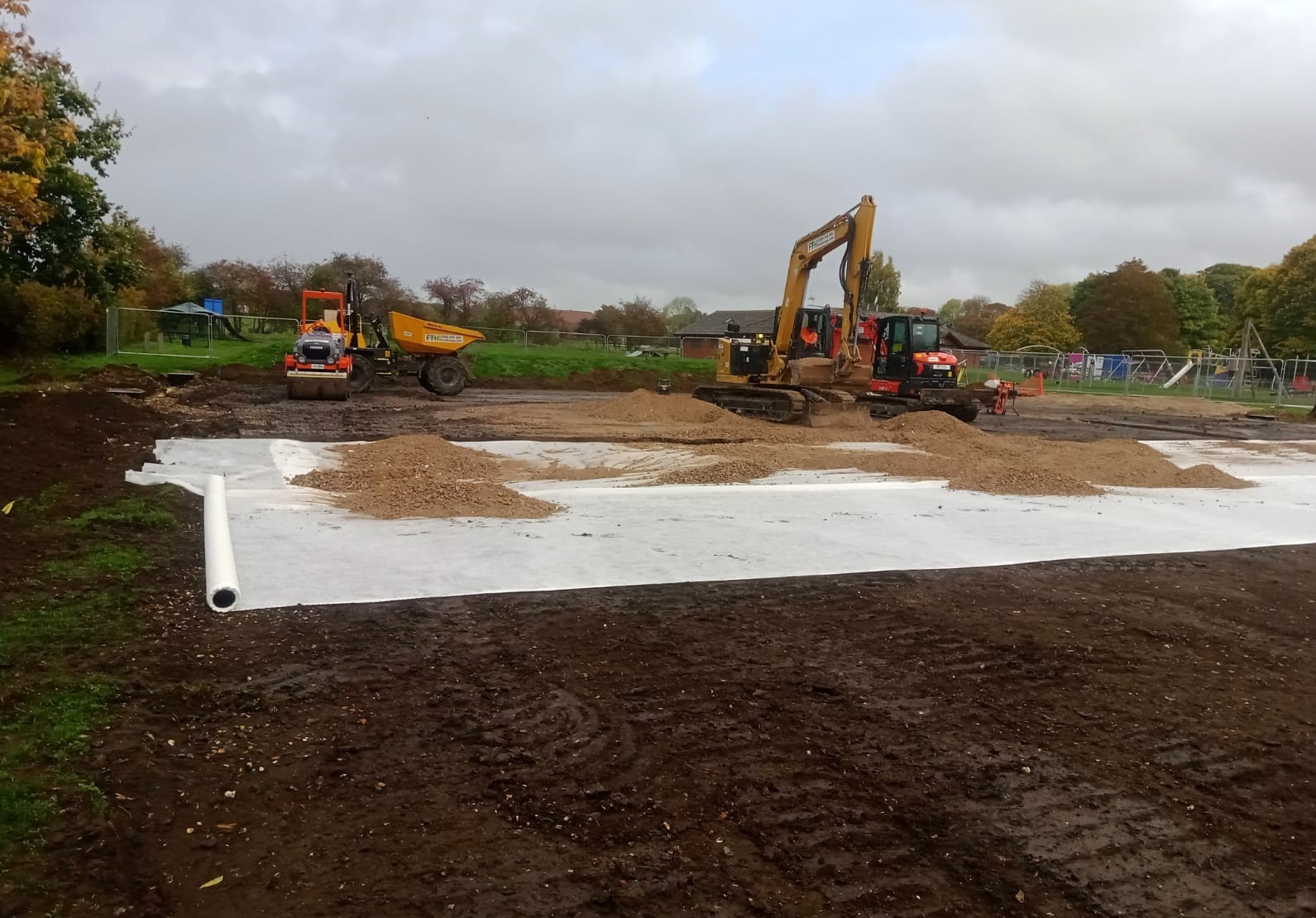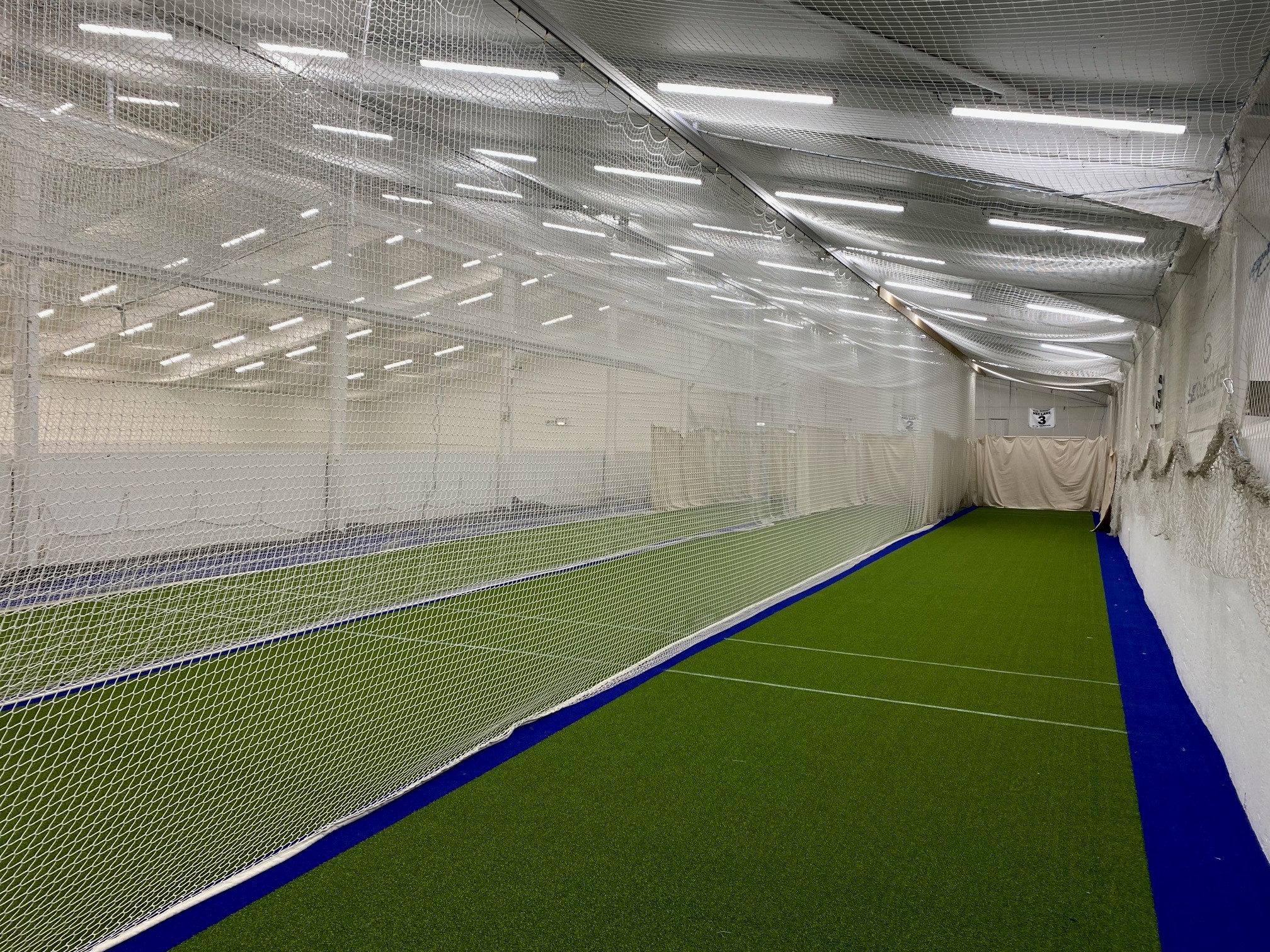



Sports Pitch Drainage
Why is Sports Pitch Drainage so important?

Sports Pitch Drainage, Design & Installation
Drainage is an important consideration when constructing natural turf sports pitches capable of withstanding regular use. At Fieldform, we excel at providing design advice and construction services relating to pitch drainage schemes, we will always offer a site specific and budget sensitive solution. When starting a new drainage project, we take into consideration the existing turf, natural environment, and any drainage systems already in place for surrounding roads and buildings. These factors are used to design a site specific drainage system, other considerations include, calculating trench width, size of drainage pipe, distance between drainage runs and type of back fill.
To provide clients with a turnkey service we have invested heavily in plant and equipment, the newest addition to our fleet is the award winning, Shelton Supertrencher+. This specialist piece of laser guided equipment creates a trench with minimal disruption and is capable of digging up to 760mm deep and 155mm wide using twin hydraulic cylinders. The two gearboxes enable the machine to work in all weather and ground condition. To create a trench, this machinery excavates soil and dispenses it into a large aperture on the front body of the machine. From here the soil is moved to either our trailer or dumper truck running alongside, creating a neat trench ready to lay pipe and with minimal clean-up.
Our new Supertrencher+ compliments our larger Shelton CT150 chain trencher that was used so successfully last year on a jet fuel pipeline running from Fawley in Hampshire to Heathrow airport.

Why is Sportsturf Drainage Important?
Winters are getting wetter resulting in more sporting fixtures getting cancelled due to natural turf pitches not being drained or effectively maintained. Installing well designed primary and secondary drainage systems can help reduce the number of training sessions and fixtures being cancelled during the dark, wet winter months.
Although installing pitch drainage systems is an expensive investment, various National Governing Bodies of Sport, including the Football Association are actively encouraging local clubs, schools and community groups to submit grant funding applications to help pay for both design and construction works. If you need help with grant funding we have extensive experience of identifying suitable sources and helping clients submit funding applications to various sources.
Primary Drainage
Primary or piped drainage systems can be installed using tractor mounted trenchers to remove excess water from the playing surface. Once the trench has been excavated, perforated pipes are simultaneously installed using our Supertrencher+ or CT150 to provide a fast and effective drainage system ensuring play can be quickly resumed.
Factors to consider:
- Size of pipe – bigger is not necessarily better! The bigger the pipe the slower the flow of water. It is also worth noting that the bigger the pipe, the wider the trench, narrower trenches heal quicker and need less aggregate backfill.
- Spacings of lateral drains – this will typical be dictated by budget, ideally lateral drains need to be positioned at 3-5m spacings but more commonly sportsturf drainage ranges from 5-7m centres.
- Outfalls – to minimise the disruption of the pitch that is being drained lateral pipes must connect with main, collector drain located off the playing area

Secondary Drainage
Piped land drains are the most effective way of removing excess water from sports pitches but due to the prohibitive cost of installation most clients install pipes between 5m to 10m apart. This means surface water in some settings has to travel 5m to the nearest land drain which can take time resulting in the loss of training sessions and matches.
To speed up the water movement process and provide a budget sensitive solution we recommend clients consider installing primary and secondary drainage systems.
There are different types of secondary drainage available, two of these techniques have been summarised below:
- Sand slitting – typically a 50mm wide x 150mm deep trench back filled with gravel and sand with spacings of 1-2m apart
- Gravel banding – typically 25mm – 250mm deep created using vibrating stainless steel tines with gravel being fed immediately into the void. Gravel banding is very effective and low cost but has to be carried out when the soil is moist throughout the entire working depth.
Prior to installing any type of secondary drainage we recommend a comprehensive maintenance programme to prospective clients to ensure maximal longevity. Maintenance typically involves a twelve month package of works including regular topping up of the drainage runs to avoid sinking.
Levels of usage is also an important consideration, once a pitch is drained there is a temptation to over use the area for training, matches, tournaments etc, this needs to be avoided to ensure the pitch remains in a high quality condition all year round.

About Fieldform
Fieldform is a design and build contractor that delivers high quality sportsturf solutions for both commercial and private clients. We operate an extensive fleet of specialist equipment including:
- Deutz Fahr 125hp, 140hp & 50hp tractors
- Shelton 760 Supertrencher+, capable of trenching to 760mm deep
- Shelton CT150 chain trencher, capable of trenching to 1.5m deep
- Shelton 3T Universal Hopper, capable of backfilling and spreading
- Shelton trench compaction wheel
- Campey Speed Dresser 18H
- Amazone Groundkeeper 220, capable of cutting / flailing / scarifying & collecting c/w hi-tip
- Imants Shockwave 220
- Mumby multi-star seeder, 1.8m wide
- Mumby laser grader, 1.8m wide
- Rotadairon stone burier
- BLEC Turfmaker, 2m wide
- Rotadarion stone burier, 3m wide
- KUHN HR3004 Power Harrow, 3m wide
- CV300 grass harrows, tines and Spring rolls c/w APV300 GPS Air Seeder
- BCS two-wheel tractor unit
- Mumby pedestrian Cultipac seeder
- Mumby pedestrian power box rake
- McConnel Shakaerator
- Teagle spinner
- Levelling bar
- Combination harrows
- Combination cultivators
- Cambridge and crosskill rollers
- Idrofoglia Sports Field Rain Gun
- Maintenance kit including rotary mowers, strimmers and various hand tools
- Eco Lawn 250 top dresser
We actively target works at design stage to provide clients with a turnkey solution, for more information please contact us on 01256 591001 or info@fieldform.co.uk











